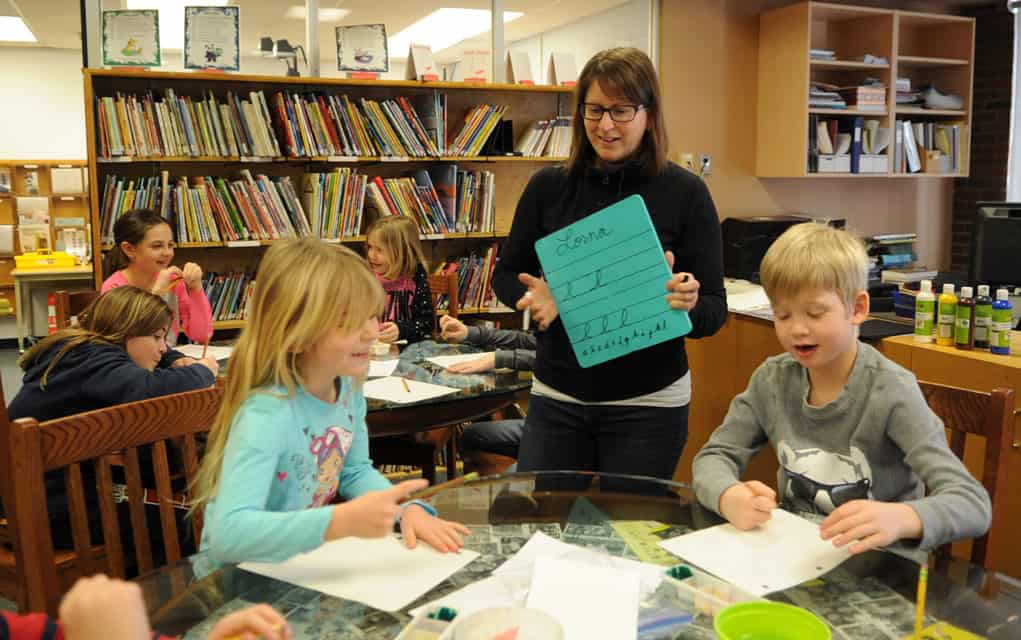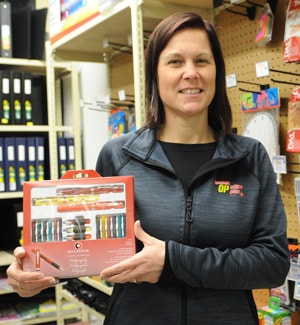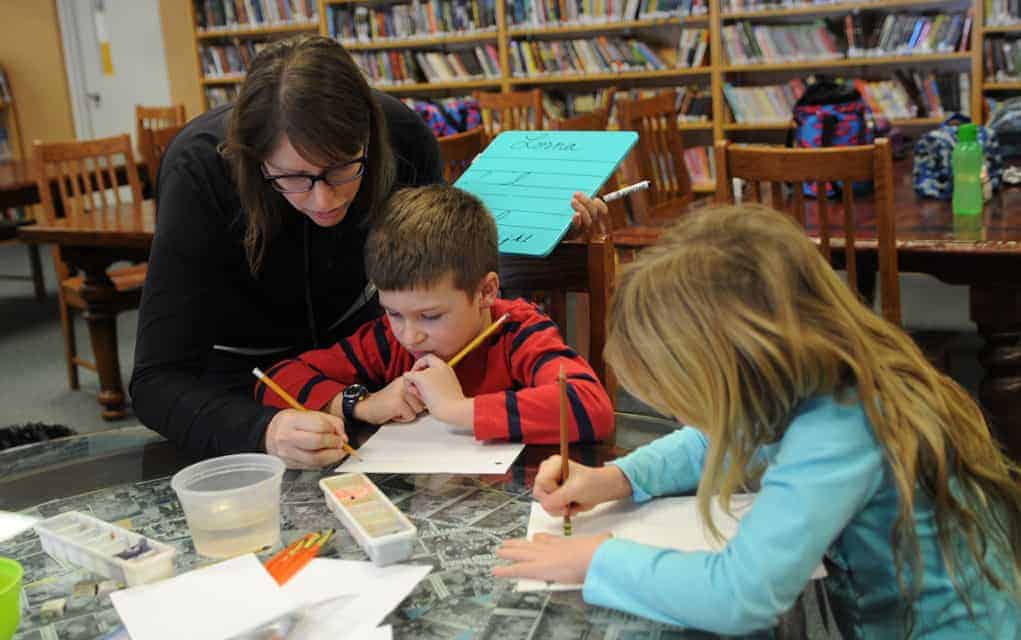Long gone are the days when school children would practice their best curly qs, tracing letter after letter until they mastered the art of cursive writing.
As quickly as computers and mobile devices entered the classroom, cursive writing vanished from Ontario’s public schools.
Now students are learning to communicate in a myriad of ways. Some wonder what has been lost and what the effects – however minimal – will be on the first generation to not learn cursive writing.
Aline Chan teaches calligraphy and cursive writing across southern Ontario, including workshops in Elmira, and feels much has been lost by removing the practice from schools.
“I’m from the Caribbean and up until high school I’ve always used a fountain pen. When I first started school the British system insisted that you use the dip pen. We automatically learned how to write with calligraphy. The digital era, with everyone wanting to use computers, we’ve seen the death of cursive,” Chan said.
She says the loss of cursive also helped bring about the decline in postal mail. Instead we’re now being deluged with emails.
She still teaches cursive writing to high school students, who she says are interested in learning it. She noticed an uptick in interest when the Harry Potter and Lord of the Rings movies grew in popularity due to the handwriting visible in the films.
Chan usually has a waiting list for her classes in Hamilton and many of her students are learning it to be able to write decorative invitations and cards, often for weddings.
“Some students actually spend their spare change buying their own pens,” Chan said.
Aside from the aesthetics, Chan notes there are some real benefits to handwriting as opposed to typing.
“There’s certain studies that say when you write with a pen or just handwriting, when you take notes it engages your brain more deeply, and it improves children’s dexterity, fine motor skills,” Chan said.
She’s also read that when you handwrite instead of typing on a keyboard you think better and you develop better thinking strategies. Research has shown kids who know how to do basic handwriting have an expanded vocabulary and they can spell better, which makes sense, given the fact writing on paper doesn’t have spell check to fix your mistakes.
Despite the prevalence of computers and mobile devices for communication, she still sees a real need for basic handwriting skills.
“It’s quite upsetting when I see kids that reach high school and they don’t know basic handwriting. They can’t even hold a pen properly, they hold it like they’re holding a stylus,” Chan said.
But she doesn’t think schools should revert back to cursive writing drills, rather she’s pushing for basic handwriting – joining letters together – to be taught.
And she might get her wish if other schools follow the Toronto Catholic School Board which brought back mandatory cursive writing. Chan notes it’s also being reintroduced in the U.S.
Despite not being required by the Ontario curriculum, cursive writing is required in Ontario when signing legal documents like a passport or driver’s license.
“There was something in the Toronto news not too long ago about a kid who went to get his driver’s license and he couldn’t because he couldn’t write. He could only print. There are cases of teenagers applying for passports and they have to learn to sign their name in handwriting and they have been denied,” Chan said.

For Chan, it’s important to pass the knowledge and appreciation of the handwritten word on to the next generation. When her granddaughter entered Grade 3 and wasn’t being taught cursive she took it upon herself to show her how to join her printed letters to do basic handwriting.
“I don’t teach it with all the curls. I teach them more than the handwriting and how to join their letters. Teaching cursive right now is an option for the schools and it’s an option for the teachers. And most teachers cannot write cursive so they don’t teach it. Also, the curriculum is so fact-based the teachers don’t have time to spend on cursive,” Chan said.
Chan also teaches at the Dundas Valley School of Art and museums across Ontario.
Wendy Goulden, an education services consultant for the Waterloo Region District School Board, explains teachers are guided by the Ontario curriculum. The most current curriculum stands as a policy document from 2006.
Handwriting has always fallen under the language curriculum, which has a writing strand in it.
“Within the writing strand over the years cursive writing has appeared or not appeared and basically it’s the provincial position,” Goulden explained.
She says in 1997 in the old curriculum there was a little piece in there that placed cursive writing and learning to print under visual presentation but when they revised the provincial curriculum in 2006 that disappeared.
There is no provincial guidance around cursive writing at all.
“The only place that a teacher might make a very minor link to cursive writing in their practice would be in the writing strand. There is a tiny little area that focuses on publishing and it basically talks about presenting a finished product and they would give kids opportunities to present a finished product and it could be using different strategies. So it might include a certain kind of font or a certain kind of graphic that’s used or a certain kind of layout, and to use legible printing or cursive writing,” Goulden said.
She says they’re always encouraging teachers to think about the intention of the language curriculum and the writing strand. Now they’re more focused on teaching students how to be effective and efficient communicators.
“Over time, so much has changed in terms of how we communicate through texts and technology and computers and personal devices. Really teachers are thinking about incorporating all of those kinds of communication skills,” Goulden said.
She says sometimes a teacher will use cursive writing as an extra activity if students are interested in it or the teacher will write in cursive to communicate to the students so that they’re able to read cursive writing.
There’s more of an emphasis being placed on learning how to be a critical thinker, having strong oral communication skills and collaboration that teachers are trying to find ways to support those skills with less time spent on some of the traditional skills, like cursive writing.
This does beg the question, what might students be losing?
“If you appreciate handwriting then you may be inclined to say, yes, it is an art that is being lost. Others might say, ‘are you kidding me, if you saw my handwriting you would be much more pleased to see a printed text come from me because my handwriting is atrocious,’” Goulden said.
Keith Schelter, owner of Schelter Office Plus in Elmira, certainly doesn’t think the written word is dead. He keeps a small assortment of calligraphy products in the Elmira store as well as some additional supplies such as calligraphy markers in the warehouse.

“We still have a very active writing business with large volumes of writing and art instruments selling to consumers and business customers alike. I believe that people still like variety in their writing tools and people often have a favourite that they like best. Colour is very important, but so is the feel of the writing tool in the user’s hand. Young and old alike seem to enjoy selecting a writing tool and I think the simple experience of writing on a sheet of paper has always been reflective of the skill and imagination of the person doing the writing,” Schelter said.
He notes what comes out on the paper is a combination of correct form, which mattered more in the past, and personal style, resulting in a unique bit of everyday artwork.
A couple of fun facts that Chan can’t help but mention: the White House has a whole team of calligraphers who create all the invitations and envelopes in calligraphy, and when Bill Gates got married he hired a Canadian calligrapher to do his wedding invitations.
“Handwriting is personal. When you type something on a keyboard every letter is the same. There is no character in it. And handwriting develops character,” said Chan.









